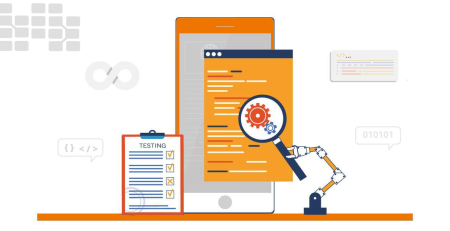10 Key Lessons for API Product Managers and Team Leaders
The foundation of contemporary software development, APIs (Application Programming Interfaces) allow for easy platform and system interaction. You play a crucial part in determining the success of your product as an API product manager or team leader, as well as the efficiency of your team. In this blog article, we’ll look at 10 important principles that every team leader and API product manager should remember as they navigate the ever-changing world of API administration.
Lesson 1: Understand Your Audience for API Success
The proverb “know your audience” is more true than ever in the changing world of API (Application Programming Interface) development. Understanding your audience as an API product manager or team leader is the first step to developing an effective and influential API product. This session explores the value of audience comprehension and how it affects every step of your API journey.
The Developer-Centric World of APIs:
APIs are the bridges that connect applications, systems, and data, allowing them to work harmoniously. However, these bridges are built by developers, for developers. Your primary audience consists of software engineers, programmers, and developers who will be integrating your API into their projects.
1. Developer Pain Points:
To create an API that truly resonates with your audience, you need to identify and address their pain points. What challenges do developers face when integrating APIs? Are there common hurdles that can be overcome with thoughtful design? Conduct surveys, engage in forums, and actively listen to their feedback.
2. Developer Needs and Goals:
Every API integration serves a purpose – it might be to simplify a process, enhance functionality, or streamline data exchange. By understanding the needs and goals of developers, you can tailor your API to provide solutions that align with their objectives.
3. Technical Proficiency:
Your audience’s technical proficiency level matters. Are they experienced developers who prefer in-depth documentation and customization options? Or are they newcomers who need user-friendly guides and ready-made code snippets? Crafting your documentation and resources accordingly can make a significant difference in adoption.
4. User-Centric Approach:
While developers are your primary audience, don’t forget about the end-users who will ultimately interact with applications powered by your API. Consider how the API enhances the user experience and solves their problems. Balancing developer needs and user-centric design leads to a more holistic and impactful API product.
5. Communication and Engagement:
Engage with your developer community regularly. Establish a feedback loop through developer portals, forums, and support channels. Actively address their concerns, answer questions, and incorporate their suggestions. This not only improves the API but also fosters a sense of community.
6. Diverse Use Cases:
APIs can be integrated into a wide array of applications and industries. Understand the diverse use cases your API might serve. This knowledge can help you provide specialized resources and examples that resonate with different sectors.
7. The Competitive Edge:
Understanding your audience provides a competitive edge. By offering an API that caters to specific developer needs, you stand out in a crowded market. Developers are more likely to choose an API that understands and supports their requirements.
In conclusion, the success of your API hinges on your ability to empathize with and understand your audience – the developers who will bring your API to life. By recognizing their pain points, needs, and goals, you can craft an API product that’s not just functional, but truly valuable. As you embark on your API journey, remember that the audience isn’t just a consideration; they’re at the heart of every line of code you write and every feature you design.
Lesson 2: Prioritize Developer Experience for API Success
In the world of API (Application Programming Interface) development, the phrase “developer experience” has risen to the forefront as a critical factor in determining the success of an API product. As an API product manager or team leader, understanding and prioritizing developer experience can set the stage for widespread adoption, positive feedback, and long-term success. In this lesson, we explore why developer experience matters and how to ensure it remains a top priority.
The Essence of Developer Experience:
Developer experience (DX) refers to how easy, enjoyable, and efficient it is for developers to work with your API. Just like user experience (UX) is crucial for application design, DX shapes how developers perceive and engage with your API.
1. Documentation Clarity:
Clear and comprehensive documentation is the foundation of a positive DX. Developers need to quickly understand how to integrate and use your API. Provide well-structured guides, tutorials, code samples, and interactive documentation to minimize friction.
2. Seamless Integration:
Developers seek APIs that seamlessly integrate with their projects. Design your API with simplicity and consistency in mind. Provide SDKs (Software Development Kits) for popular programming languages and frameworks to accelerate integration.
3. Intuitive Design:
Design your API endpoints and data structures intuitively. An API that follows logical patterns and adheres to industry standards is easier for developers to work with. A well-thought-out design reduces the learning curve and potential errors.
4. Error Handling and Feedback:
When something goes wrong, developers need meaningful error messages and feedback to diagnose and solve issues quickly. Thoughtful error handling contributes to a smoother development process and enhances DX.
5. Developer Portals:
Create developer portals that serve as a centralized hub for all things related to your API. Include documentation, API keys management, analytics, and support resources. An organized portal enhances accessibility and user control.
6. Quick Start Guides:
Offer quick start guides that walk developers through the process of getting up and running with your API in minimal time. Providing a smooth onboarding experience encourages developers to explore further.
7. Community and Support:
A thriving developer community and responsive support are integral to DX. Foster engagement through forums, chat channels, and Q&A sessions. Address developer queries promptly to create a positive rapport.
8. Continuous Improvement:
DX is an ongoing endeavor. Regularly gather feedback from developers and iterate on your API and its resources based on their suggestions. Demonstrating a commitment to improvement cultivates trust.
9. Sample Use Cases:
Provide real-world use case examples and case studies that showcase the value and versatility of your API. Developers appreciate practical demonstrations of how your API can solve their challenges.
10. Performance and Reliability:
A well-performing and reliable API is a cornerstone of positive DX. Minimize latency, ensure uptime, and optimize response times. Consistent performance builds developer confidence.
In conclusion, prioritizing developer experience isn’t just a trend – it’s a strategic approach that can differentiate your API in a competitive landscape. Remember that your API is a tool that developers choose to use, and a positive developer experience can lead to greater adoption, advocacy, and long-term success. By focusing on clarity, simplicity, support, and continuous improvement, you can create an API that developers not only use but also genuinely enjoy working with.
Lesson 3: Define Clear Objectives for Successful API Management
In the realm of API (Application Programming Interface) development, having clear and well-defined objectives is akin to having a roadmap that guides every decision, action, and iteration. As an API product manager or team leader, setting clear objectives is paramount to achieving success and ensuring that your API aligns with both business goals and user needs. In this lesson, we explore the significance of clear objectives and how to define them effectively.
The North Star: Clear Objectives:
Clear objectives serve as the guiding stars that steer your API project in the right direction. They provide a sense of purpose, focus efforts, and help measure progress toward a defined goal.
1. Business Alignment:
Your API’s objectives should be in line with your organization’s broader business goals. Whether it’s driving revenue, expanding market share, or enhancing customer satisfaction, ensure that your API’s objectives contribute to the company’s success.
2. User-Centric Approach:
Consider the needs and desires of your end-users when defining objectives. Your API should solve real problems or provide value to users. Objectives like improving user experience, streamlining processes, or enhancing data accessibility can be user-centric.
3. Specific and Measurable:
Objectives should be specific and measurable. Vague goals make it difficult to track progress. For instance, instead of a goal to “increase API usage,” aim for a specific percentage increase within a defined timeframe.
4. Achievable and Realistic:
While aiming high is commendable, set objectives that are attainable within your resources and capabilities. Unrealistic goals can lead to frustration and burnout among your team.
5. Time-Bound:
Attach a timeframe to your objectives. A deadline creates a sense of urgency and helps in planning and resource allocation. Consider short-term, medium-term, and long-term objectives to cover different horizons.
6. Prioritization:
In cases where you have multiple objectives, prioritize them based on their importance and impact. This ensures that resources are allocated wisely and efforts are aligned with the most crucial goals.
7. Alignment with User Feedback:
Listen to user feedback and align your objectives with the areas that need improvement or enhancement. This demonstrates responsiveness and ensures that your API addresses real pain points.
8. Flexibility for Iteration:
While objectives provide direction, be open to iteration based on feedback and changing circumstances. Sometimes, pivoting to better align with user needs can lead to more successful outcomes.
9. Continuous Evaluation:
Regularly assess your progress toward the defined objectives. Use metrics and analytics to measure success and identify areas that need adjustments. Adjust your strategy if you’re not making the expected progress.
10. Communicate Objectives Clearly:
Ensure that your team and stakeholders are well-informed about the objectives. Transparent communication fosters alignment, motivation, and a shared sense of purpose.
In conclusion, defining clear objectives is the compass that guides your API project’s journey. It ensures that your efforts are directed toward achieving meaningful outcomes that benefit both your organization and your users. By setting specific, measurable, achievable, relevant, and time-bound (SMART) objectives, you lay the foundation for a successful API that adds value and meets the needs of all stakeholders involved.
Lesson 4: Foster Cross-Functional Collaboration for Seamless API Development
In the intricate tapestry of API (Application Programming Interface) development, the threads of cross-functional collaboration are what weave together the most successful and innovative outcomes. As an API product manager or team leader, embracing collaboration across various departments and roles is essential for creating an API that thrives. In this lesson, we delve into the significance of cross-functional collaboration and how to cultivate it effectively.
The Power of Cross-Functional Collaboration:
API development is not confined to engineering teams alone. A harmonious interplay of skills, perspectives, and expertise from various domains elevates the quality and impact of your API.
1. Shared Vision:
Start by aligning all stakeholders around a shared vision. Make sure that everyone understands the purpose, goals, and benefits of the API project. This creates a sense of unity and common purpose.
2. Inclusive Planning:
Involve representatives from different departments early in the planning stages. Marketing, sales, support, and design teams can provide valuable insights and unique perspectives that shape a more comprehensive API strategy.
3. Communication Channels:
Establish clear communication channels that facilitate collaboration. Regular meetings, status updates, and collaborative tools can ensure that everyone is aware of the API’s progress and can offer input.
4. Break Silos:
Efforts to foster collaboration should break down silos and encourage information sharing. When different departments work together, the potential for innovative ideas and solutions increases.
5. Role Clarity:
Clearly define the roles and responsibilities of each team involved. This prevents duplication of effort and ensures that tasks are assigned to the team members with the most relevant expertise.
6. Design Thinking Workshops:
Hold design thinking workshops that bring together diverse team members to brainstorm and ideate on API features, user experience, and potential challenges. This collaborative approach sparks creativity.
7. Feedback Loops:
Create mechanisms for teams to provide feedback on each other’s work. This fosters an environment of continuous improvement and encourages cross-departmental support.
8. Empathy for User Needs:
Ensure that teams understand the needs and pain points of the end-users who will interact with the API. This shared understanding drives a unified effort to create a valuable product.
9. Transparent Documentation:
Document decisions, discussions, and project updates transparently. This not only keeps everyone informed but also helps new team members quickly understand the project’s context.
10. Celebrate Wins Together:
When milestones are reached or positive outcomes are achieved, celebrate them as a cross-functional team. This reinforces the sense of collaboration and shared accomplishment.
In conclusion, fostering cross-functional collaboration is a pivotal element in the success of your API project. It brings together the diverse expertise of various departments, enriching the development process and resulting in a more robust and impactful API. By creating a culture of collaboration, open communication, and shared objectives, you pave the way for an API that resonates with users, meets business goals, and reflects the collective effort of a united team.
Lesson 5: Embrace Security Best Practices for Robust API Management
In the digital landscape, where data breaches and cyber threats loom, the fortress of security is crucial for any API (Application Programming Interface) product. As an API product manager or team leader, embracing security best practices isn’t just a recommendation; it’s a mandatory step to protect user data, maintain trust, and ensure the longevity of your API. In this lesson, we explore the significance of security and how to implement best practices effectively.
The Imperative of Security:
An API is a gateway that exposes valuable data and functionality. Ensuring the security of this gateway is paramount to safeguarding both user information and the reputation of your organization.
1. Authentication and Authorization:
Implement robust authentication mechanisms to verify the identity of users and applications accessing the API. Employ proper authorization controls to ensure that only authorized entities can perform specific actions.
2. Data Encryption:
Sensitive data transmitted over the network should be encrypted using strong encryption protocols. This prevents eavesdropping and data interception by malicious actors.
3. Input Validation:
Sanitize and validate input data to prevent common attacks like SQL injection and cross-site scripting (XSS). These attacks can exploit vulnerabilities in your API and compromise data.
4. Rate Limiting and Throttling:
Enforce rate limiting and request throttling to prevent abuse and protect against Distributed Denial of Service (DDoS) attacks. This ensures that the API’s performance remains unaffected.
5. Regular Security Audits:
Conduct routine security audits to identify vulnerabilities and potential weaknesses. Penetration testing and vulnerability assessments help you address security gaps before they’re exploited.
6. Secure Coding Practices:
Educate your development team about secure coding practices. Avoid hardcoding sensitive information, use parameterized queries, and sanitize inputs to prevent security loopholes.
7. API Tokens and Keys Management:
Implement a robust system for generating, storing, and managing API tokens and keys. Use techniques like OAuth for secure authorization.
8. Secure Logging and Monitoring:
Log security-related events and regularly monitor logs for signs of unauthorized access or suspicious activity. Swift detection and response can mitigate potential threats.
9. Keep Software Updated:
Regularly update the software and libraries used in your API to address known security vulnerabilities. Outdated components can become entry points for attackers.
10. Educate Users:
Provide your API users with guidelines on how to use the API securely. Educating developers about best practices ensures that they integrate the API while minimizing security risks.
11. Compliance with Standards:
Ensure that your API adheres to relevant security standards and regulations, such as GDPR, HIPAA, or PCI DSS, depending on the nature of the data being handled.
12. Incident Response Plan:
Have a well-defined incident response plan in place. In the unfortunate event of a security breach, a structured plan can minimize damage and help in quick recovery.
In conclusion, security should be at the forefront of your API management strategy. By implementing security best practices, you build a robust defense against potential threats, earn user trust, and protect sensitive data. Remember, security is not a one-time effort but an ongoing commitment to ensure the resilience of your API in an increasingly interconnected and digitally-driven world.
Lesson 6: Iterate and Improve: The Essence of Dynamic API Management
In the dynamic realm of technology, standing still is akin to falling behind. For API (Application Programming Interface) product managers and team leaders, the mantra of “iterate and improve” is the driving force behind maintaining the relevance, efficacy, and user satisfaction of your API. In this lesson, we explore the significance of continuous iteration and improvement in API management and how to execute it effectively.
The Art of Iteration and Improvement:
An API isn’t a static entity—it’s a living, evolving tool that must adapt to changing user needs, technological advancements, and industry trends.
1. Gather User Feedback:
Actively seek and gather feedback from users. Whether it’s through surveys, user forums, or direct communication, user insights provide valuable information about pain points, preferences, and areas for improvement.
2. Data-Driven Insights:
Leverage analytics and usage data to gain insights into how users interact with your API. Identify patterns, areas of high usage, and bottlenecks that can inform your improvement strategies.
3. Regular Assessments:
Conduct periodic assessments of your API’s performance, functionality, and security. Regular audits help you identify vulnerabilities and areas that need enhancement.
4. Prioritize Enhancements:
Once you have a clear understanding of user needs and pain points, prioritize enhancements based on their potential impact and alignment with your API’s goals.
5. Incremental Changes:
Rather than attempting radical overhauls, embrace incremental changes. This approach minimizes disruption and allows for more controlled testing and validation.
6. A/B Testing:
Incorporate A/B testing for new features or changes. This allows you to compare the performance and user response of different versions before committing to a specific direction.
7. User-Centric Design:
Ensure that improvements align with user needs and expectations. Changes should enhance the user experience and solve real problems.
8. Document Changes:
Thoroughly document all updates and changes. This documentation aids in onboarding new developers and provides transparency about the evolution of your API.
9. Version Control:
As you make improvements, consider version control to maintain backward compatibility for existing users. This way, users can transition to new features at their own pace.
10. Performance Optimization:
Continuously optimize the performance of your API. Minimize latency, improve response times, and optimize code to ensure a smooth user experience.
11. Solicit Internal Feedback:
Collaborate with your development and design teams for internal feedback. Their insights can uncover technical challenges and provide valuable perspectives.
12. Embrace User-Centricity:
Ultimately, the goal of iteration and improvement is to enhance user satisfaction and value. Keep users at the center of your decisions and aim to deliver an API that continually exceeds their expectations.
In conclusion, the journey of API management is an ongoing process of refinement and evolution. By iteratively improving your API based on user feedback, data-driven insights, and industry trends, you ensure that it remains a relevant and valuable tool. Embracing a culture of continuous improvement not only enhances the API’s functionality but also demonstrates your commitment to providing the best possible experience for your users.
Lesson 7: Plan for Scalability in API Management
In the digital age, success often leads to growth, and growth demands scalability. For API (Application Programming Interface) product managers and team leaders, planning for scalability is akin to future-proofing your API against the challenges that come with success. In this lesson, we explore the significance of scalability and how to proactively plan for it in your API management strategy.
The Necessity of Scalability:
As your API gains popularity and attracts more users, its ability to handle increased traffic, data, and demands becomes paramount.
1. Design for Performance:
Build your API with performance in mind from the very start. Efficient code, optimized data structures, and well-designed endpoints contribute to a solid foundation for scalability.
2. Horizontal Scaling:
Plan for horizontal scaling, which involves adding more servers or instances to your infrastructure as traffic increases. This approach allows your API to distribute the load and handle higher volumes of requests.
3. Load Balancing:
Implement load balancing mechanisms to evenly distribute incoming requests across multiple servers. Load balancers ensure that no single server becomes a bottleneck.
4. Caching Strategies:
Utilize caching mechanisms to reduce the load on your backend systems. Cached responses can be served quickly to users, minimizing the need for repeated database queries.
5. Statelessness:
Design your API to be stateless, meaning that each request contains all the information necessary to process it. Statelessness simplifies scaling since any server can handle any request without relying on previous interactions.
6. Asynchronous Processing:
Implement asynchronous processing for tasks that don’t need immediate responses. Offloading time-consuming tasks to background workers ensures that your API remains responsive to user requests.
7. Cloud Infrastructure:
Consider leveraging cloud platforms that offer scalable infrastructure. Cloud providers allow you to allocate resources on-demand, ensuring your API can handle fluctuations in traffic.
8. Auto-Scaling:
Set up auto-scaling based on predefined criteria, such as CPU utilization or request rate. Auto-scaling automatically adds or removes resources as needed, maintaining optimal performance.
9. Performance Testing:
Regularly conduct performance testing to simulate high traffic scenarios and identify potential bottlenecks. This proactive approach helps you address scalability challenges before they affect users.
10. Monitoring and Alerts:
Implement robust monitoring tools to track key performance metrics. Set up alerts that notify you when certain thresholds are reached, enabling you to take immediate action.
11. Database Considerations:
Scale your database infrastructure alongside your API. Employ techniques like sharding, replication, and choosing appropriate database engines to ensure data availability and performance.
12. Disaster Recovery:
Develop a disaster recovery plan to address scenarios where the scalability of your API might be compromised due to failures. Backups, redundancy, and failover mechanisms are essential.
In conclusion, scalability is a strategic investment in the future of your API. By planning for scalability from the outset and implementing the right architectural decisions, you position your API to handle growth without compromising performance. A scalable API not only ensures a seamless user experience during periods of high demand but also fosters user trust and loyalty by delivering consistent service.
Lesson 8: Monitor and Analyze Usage for Informed API Management
In the realm of API (Application Programming Interface) management, knowledge is power. Monitoring and analyzing usage data provide you with insights that are invaluable for making informed decisions, optimizing performance, and enhancing user experiences. As an API product manager or team leader, mastering the art of usage monitoring and analysis is essential. In this lesson, we explore the importance of tracking usage and how to do it effectively.
The Insights Hidden in Usage Data:
Usage data offers a window into how your API is being utilized, what features are popular, and where improvements are needed.
1. Real-Time Monitoring:
Implement real-time monitoring tools that keep track of API performance metrics, such as response times, error rates, and server health. Real-time data helps you identify and address issues promptly.
2. Traffic Patterns:
Analyze traffic patterns to understand peak usage times and potential bottlenecks. This insight enables you to allocate resources effectively and optimize server capacity.
3. Endpoint Analytics:
Monitor the usage of individual endpoints to identify which ones are most frequently accessed and which ones might be underutilized. This information guides your API improvement efforts.
4. User Behavior:
Track user behavior within your API, including the types of requests they make and the data they access most often. This helps you tailor your API to better serve their needs.
5. API Performance:
Measure API performance through metrics like response time, latency, and throughput. Identify trends and anomalies that could impact user experience.
6. Error Analysis:
Monitor error rates and analyze the types of errors that occur. Pinpoint common issues and areas that need improvement to enhance reliability.
7. Geographic Distribution:
Understand where your users are located geographically. This knowledge can help you optimize server locations for improved response times.
8. Usage Analytics Tools:
Leverage analytics tools and platforms that provide comprehensive insights into user behavior and API performance. These tools often offer customizable dashboards and reporting capabilities.
9. Conversion Tracking:
If your API involves monetization or user engagement, implement conversion tracking to understand how users move through different stages of engagement.
10. User Segmentation:
Segment users based on usage patterns, preferences, and demographics. This segmentation helps you tailor your API offerings to different user groups.
11. Feedback Integration:
Combine usage data with user feedback to gain a more holistic view of your API’s strengths and weaknesses. User input can highlight areas for improvement that might not be evident from usage data alone.
12. Predictive Analysis:
Use historical usage data to make predictions about future trends and requirements. This proactive approach ensures that you’re prepared for increased demand.
In conclusion, monitoring and analyzing usage data is akin to holding a compass that guides your API management decisions. It empowers you to optimize performance, refine features, and address user needs more effectively. By consistently leveraging the insights from usage data, you not only enhance the value of your API but also demonstrate a commitment to delivering a superior user experience that evolves in tandem with user requirements.
Lesson 9: Continuous Learning: Elevating Your API Management Expertise
In the rapidly evolving landscape of technology, the quest for knowledge is ceaseless. For API (Application Programming Interface) product managers and team leaders, embracing a culture of continuous learning is essential to stay abreast of emerging trends, best practices, and innovative solutions. In this lesson, we delve into the significance of continuous learning and how it enriches your expertise in API management.
The Journey of Lifelong Learning:
In the world of APIs, complacency is the enemy of progress. Continuous learning fuels your growth, enriches your insights, and keeps you at the forefront of your field.
1. Industry Trends and Innovations:
Stay informed about the latest trends in API development, security, and integration. Follow thought leaders, attend conferences, and engage in discussions to absorb the latest insights.
2. Webinars and Workshops:
Participate in webinars and workshops focused on API management and related subjects. These events offer practical insights and networking opportunities with experts.
3. Online Courses:
Enroll in online courses that offer in-depth knowledge about API design, security, performance optimization, and more. Many platforms offer self-paced learning options.
4. Industry Publications:
Read industry publications, blogs, and research papers to gain valuable insights from professionals who are pushing the boundaries of API development.
5. Collaboration with Peers:
Engage with your peers in the API community. Join online forums, attend meetups, and participate in discussions to share experiences and learn from others.
6. Experimentation and Projects:
Hands-on experience is a powerful teacher. Experiment with new tools, technologies, and approaches by working on side projects or contributing to open-source initiatives.
7. Feedback and Reflection:
Seek feedback on your API projects and strategies. Constructive criticism can highlight areas for improvement and help you refine your approach.
8. Networking:
Attend industry events, conferences, and meetups to network with fellow professionals. Conversations with peers can provide fresh perspectives and insights.
9. Tech Demos and Showcases:
Participate in technology demonstrations and showcases to see firsthand how other professionals are pushing the boundaries of API development.
10. Certification Programs:
Explore certification programs related to API management, which not only enhance your knowledge but also serve as valuable credentials in your career.
11. Soft Skills Development:
Remember that API management involves not only technical skills but also soft skills like communication, leadership, and collaboration. Continuously develop these aspects of your expertise.
12. Feedback Loop for Learning:
Apply the lessons you learn in a feedback loop. Implement new strategies, test ideas, and measure outcomes. Learning is most valuable when put into action.
In conclusion, the journey of continuous learning is an investment in your personal growth and professional success. In the dynamic realm of API management, staying curious, open-minded, and adaptive is essential to navigate challenges and embrace opportunities. By enriching your knowledge base and skill set, you empower yourself to lead with confidence, create impactful APIs, and contribute meaningfully to the evolving technology landscape.
Lesson 10: Communication is Key in API Management
In the intricate tapestry of API (Application Programming Interface) management, effective communication is the thread that weaves together the efforts of teams, aligns stakeholders, and drives successful outcomes. As an API product manager or team leader, mastering the art of communication is paramount for clarity, collaboration, and achieving your API’s goals. In this lesson, we delve into the significance of communication and how to wield it skillfully in your API management endeavors.
The Power of Effective Communication:
Clear and transparent communication is the glue that holds your API management process together. It fosters understanding, resolves conflicts, and aligns everyone toward a common objective.
1. Stakeholder Alignment:
Ensure that all stakeholders, from developers to executives, understand the purpose, goals, and benefits of your API. Alignment breeds commitment and a shared sense of purpose.
2. Transparent Documentation:
Document your API’s design, functionality, and guidelines comprehensively. This documentation acts as a reference point for your team and an educational resource for users.
3. Clear Roadmaps:
Create clear roadmaps that outline your API’s development stages, milestones, and planned enhancements. This roadmap keeps everyone informed about the API’s trajectory.
4. Regular Updates:
Maintain a regular cadence of updates to keep stakeholders informed about progress, challenges, and successes. Regular communication builds trust and keeps everyone engaged.
5. Effective Meetings:
Conduct efficient and purpose-driven meetings. Set clear agendas, encourage participation, and ensure that key takeaways and action items are documented.
6. Cross-Functional Collaboration:
Promote open communication among cross-functional teams. Regularly share insights, challenges, and solutions to foster a collaborative environment.
7. Responsive Support:
Provide timely and helpful support to API users. A responsive support channel demonstrates your commitment to helping users succeed.
8. User-Focused Announcements:
When rolling out updates or changes, communicate how these enhancements benefit users. Highlight the value and improvements that users can expect.
9. User Feedback Loop:
Establish a feedback loop with users. Collect their opinions, suggestions, and concerns. Let users know that their input is valued and acted upon.
10. Crisis Communication:
Develop a crisis communication plan to address potential issues or downtimes. Transparently communicate challenges and provide updates as you work to resolve them.
11. Adapting Communication Styles:
Tailor your communication style to your audience. Technical details may resonate with developers, while high-level benefits might be more suitable for non-technical stakeholders.
12. Active Listening:
Communication is a two-way street. Practice active listening to truly understand the concerns and needs of your team and users.
In conclusion, communication isn’t just a means of conveying information—it’s a strategic tool that shapes the success of your API. By fostering transparency, alignment, and collaboration through effective communication, you create an environment where challenges are tackled collectively, ideas are shared openly, and your API thrives as a result. Remember that in the dynamic world of technology, effective communication is the beacon that guides your API toward success.
Conclusion: Guiding Principles for Successful API Management
In the ever-evolving landscape of technology, effective API management requires a holistic approach that encompasses a myriad of factors. From understanding your audience and prioritizing developer experience to planning for scalability and embracing security best practices, each lesson contributes to the foundation of a successful API. As an API product manager or team leader, your journey is guided by ten key principles:
- Understand Your Audience: Tailor your API to meet the needs and goals of your developer community, balancing technical proficiency and user-centric design.
- Prioritize Developer Experience: Craft an intuitive, seamless, and supportive experience for developers, enhancing adoption, satisfaction, and advocacy.
- Define Clear Objectives: Align API objectives with business goals and user needs, setting a clear roadmap for your API’s evolution.
- Foster Cross-Functional Collaboration: Leverage diverse expertise by nurturing collaboration across teams, ensuring a well-rounded and innovative API.
- Embrace Security Best Practices: Safeguard user data and trust by implementing robust security measures that protect against threats and vulnerabilities.
- Iterate and Improve: Continuously refine your API based on user feedback, usage data, and emerging trends to enhance its value and impact.
- Plan for Scalability: Anticipate growth and design your API’s architecture to handle increased demand and maintain performance.
- Monitor and Analyze Usage: Gain insights from user behavior and API performance data to inform decisions and optimize experiences.
- Continuous Learning: Commit to lifelong learning to stay up-to-date with industry trends, tools, and best practices, enriching your expertise.
- Communication is Key: Transparent and effective communication aligns stakeholders, fosters collaboration, and guides your API journey.
Each of these principles contributes to the mosaic of successful API management. By integrating these lessons into your strategy, you not only create an API that is functional and efficient but one that resonates with users, drives business growth, and embodies the spirit of innovation. Your role as an API product manager or team leader is pivotal in shaping the technology landscape, and with these principles as your compass, your API endeavors are poised for success in a rapidly changing world.













Leave a Reply